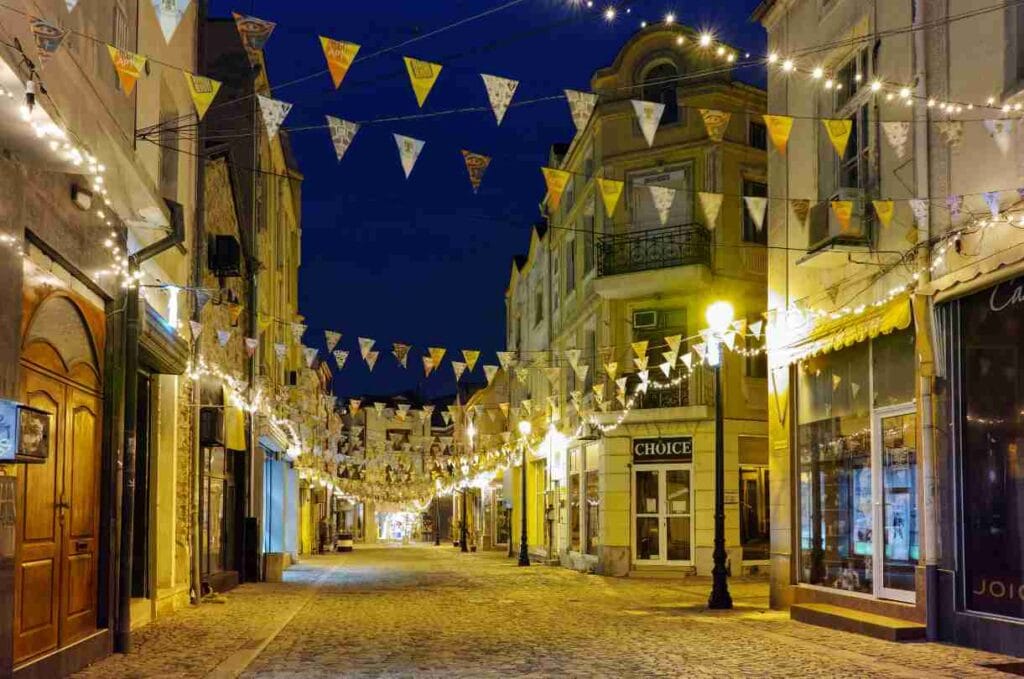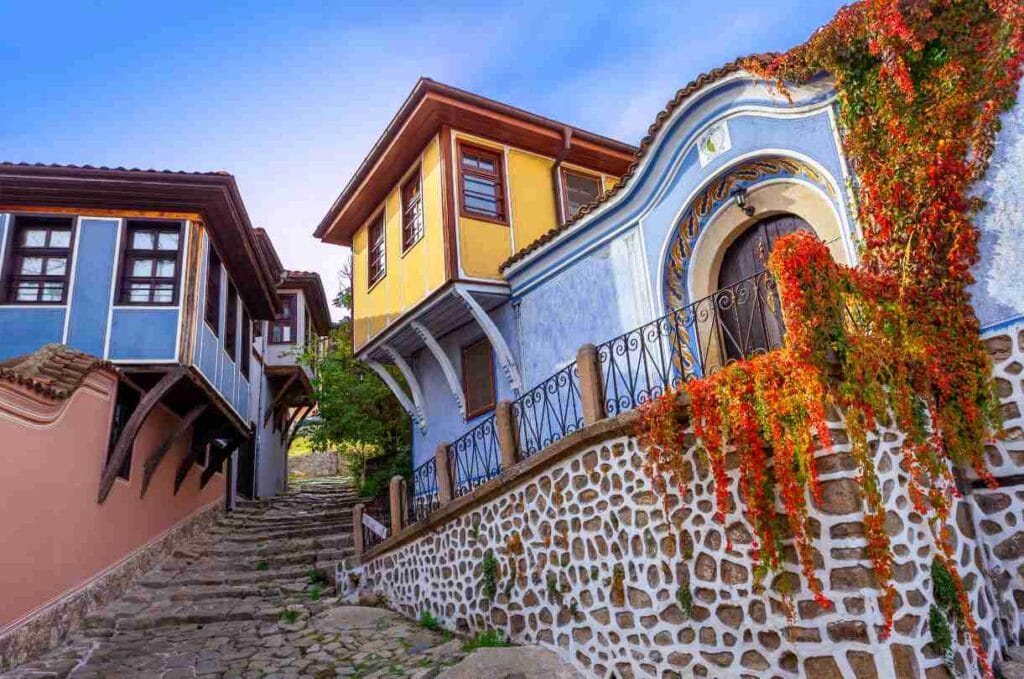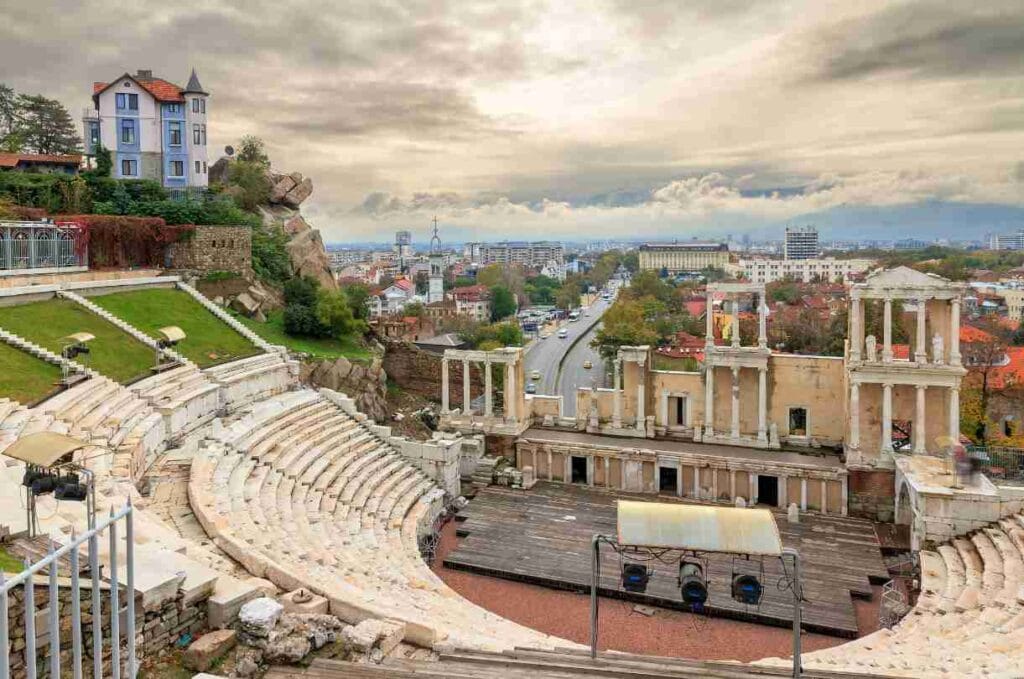If you told me ten years ago that Plovdiv would become a cultural hotspot, a place with cool cafes, boutique shops, and Instagram-worthy streets, I’d probably have laughed. Back then, Kapana was just a cheap shopping area with awkwardly placed shops and graffiti-covered walls. I remember walking through it, dodging potholes and thinking, “Is this really the ‘creative district’ they’re talking about?” But fast forward to today, and Kapana has turned into one of the most charming places in the city, with the vibe of a little Italian or Greek street (minus the gelato—though I’m still waiting for that). Plovdiv has gone through a glow-up, and honestly, I’m here for it.
So, let me take you on a humorous yet nostalgic trip through my memories of the city, and give you the lowdown on what Plovdiv has to offer now (hint: it’s much, much better than when I was a student here).
From Budget Student Life to the Best Place to Hang Out
Accommodation in Plovdiv Bulgaria – From Dorm Rooms to Boutique Hotels

Back in my student days, accommodation in Plovdiv was about as glamorous as a plastic chair and a bare lightbulb. The student dorms were… let’s just say, you didn’t go there to relax. If you were lucky, your room didn’t have that musty, “old building” smell, and you got an actual bed instead of the metal frame that seemed designed for short people.
Now? Well, the game has changed, my friends. You can find boutique hotels, cute guesthouses, and even posh apartments for rent in the heart of the city. Kapana, the once sketchy area where we’d end up after a few too many rakias, is now lined with fancy bars, stylish cafes, and galleries that look like they belong in Milan (but without the pretentiousness). Hotels here offer modern amenities, and the views? Don’t even get me started on the sunset over the old town—it’s like Plovdiv is showing off a little.
For the budget traveler, don’t worry, there are still affordable options. You can book a cozy room without needing to sell your kidneys. Just avoid the hostels near the train station—trust me, I’ve had “adventures” there that I’d prefer to forget.
Plovdiv for Digital Nomads – Coffee, Wi-Fi, and Inspiration
Plovdiv’s rise as a cultural capital isn’t just good for tourists; it’s also a dream for digital nomads. When I was a student here, Wi-Fi was like a rare commodity—if you had internet in your dorm, you felt like you were living in the future. Fast forward a decade, and Plovdiv is thriving with high-speed internet and Instagrammable co-working spaces.
Kapana is ground zero for freelancers and digital nomads. In fact, I’m convinced that the streets of Kapana are paved with Wi-Fi signals and cappuccinos. There are countless trendy coffee shops with free Wi-Fi, where you can sip on overpriced lattes (but don’t worry, they’re worth it) while editing videos or writing your next big idea. It’s like every corner has a picture-perfect café where the barista knows your name—if you’re a regular, that is. The digital nomad community in Plovdiv is thriving, and I never thought I’d say this, but Plovdiv feels like a mini version of the trendy areas of Lisbon or Barcelona.
So, whether you’re a solo traveler or a remote worker, you’ll feel right at home in Plovdiv. Just remember to bring your laptop and a power bank—trust me, you’ll need both.
Cultural and Historical Plovdiv – Ancient Ruins, Cool Museums, and More

Plovdiv isn’t just about cool cafes and co-working spaces. The city is literally built on thousands of years of history. I remember, as a student, being too busy trying to pass my exams (and finding cheap beer) to fully appreciate the history that surrounded me. But now, I look back, and I’m like, “Wow, I really should have taken more field trips.”
The Roman Theater in the city center is hands down one of the best-preserved ancient structures I’ve ever seen. I used to just walk by it, probably ignoring it because I was too tired from pulling an all-nighter. Today? I sit there, sipping my coffee (yes, I’ve become that person), imagining ancient Romans performing plays, and thinking about how cool it is that this place is still standing. Plovdiv has a rich history, from its Roman ruins to the Old Town with its beautiful, old houses that look like they’re straight out of a postcard. Oh, and don’t miss the Bachkovo Monastery just outside the city—it’s as peaceful as it is beautiful.
Travel Tips for Plovdiv – What You Need to Know (from Someone Who’s Been There)
So, now that you’re pumped about visiting Plovdiv, let me give you a few practical tips to make your stay even better:
- Getting Around: Plovdiv is a walkable city, and that’s coming from someone who used to complain about walking to class. It’s easy to navigate, and the public transport system is decent, although you’ll probably prefer walking to get the most out of the sights. Just make sure you wear comfortable shoes—those cobblestone streets are cute, but they’re a killer on your ankles.
- Cash or Card?: While most places accept cards, it’s still a good idea to carry a little cash, especially if you’re venturing out into smaller cafes or local shops. ATM fees are a thing, so try to avoid withdrawing small amounts.
- Best Time to Visit: If you want to enjoy the city without the crazy tourist crowds, try visiting in spring or early autumn. The weather is perfect, and the city is buzzing with activities but not overwhelmed. I’d avoid the summer months unless you like it hot (really hot).
- Don’t Rush: Plovdiv’s charm is in taking it slow. Walk through the Old Town, enjoy the street art in Kapana, and just breathe. And if you’re like me, take a seat at a café and people-watch—because Plovdiv is full of interesting people.
What Food Can Yeat in Plovdiv?
Okay, so here’s the thing about Bulgarian food—it’s amazing. Back when I was a student, I survived on banitsa, shopska salad, and way too many kebapche (the local sausages). And honestly? I don’t regret it at all. But now, Plovdiv’s food scene is on another level. You can still find all the classic dishes, but the city has really embraced fusion cuisine, international flavors, and high-end dining.
For the best shopska in town, head to any local restaurant, but if you’re feeling fancy, try the gourmet versions in Kapana’s upscale restaurants. And let’s not forget the wine—Bulgaria has some incredible vineyards, and you’ll find excellent local wine in every restaurant. If you’re a foodie, Plovdiv will make your heart—and your stomach—happy.
What Are Prices for Staying in Plovdiv?
Booking work best in Bulgaria
Back in the day, you could live on nothing in Plovdiv. A beer would cost less than a bus ticket, and you could grab a kebab for the price of a cup of coffee. While things have definitely gotten fancier, Plovdiv is still affordable compared to other European cities.
Accommodation in the city center can range from €30–€100 per night depending on your preferences. If you want something simple, hostels are still around, and prices for dorms are around €10–€15 per night. But if you’re looking for something more upscale (like I mentioned earlier, Kapana has plenty of boutique hotels), expect to pay a bit more. But the value you get for the price is still pretty awesome.
As for food, you can enjoy a hearty meal for about €10–€15 in a mid-range restaurant, while street food is even cheaper. So, it’s pretty easy to live like a king in Plovdiv without breaking the bank.
Final Thoughts – Plovdiv, I’m Glad You Got Your Glow-Up
As someone who spent ten years in Plovdiv, I have a special connection to this city. I’ve seen it transform from a sleepy, somewhat shabby student town to a thriving cultural hub that’s attracting people from all over the world. Kapana is now full of life, the streets are buzzing with energy, and I can’t help but be proud of how far the city has come.
Plovdiv is no longer just a place I lived in—it’s a place I now recommend to anyone looking for culture, history, good food, and great vibes. So, if you haven’t been yet, pack your bags and get ready to fall in love with Plovdiv all over again.



